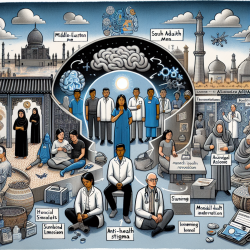In a world where medical technology is rapidly advancing, staying updated with the latest skills and knowledge is paramount. This is especially true for practitioners involved in maternal and child health. A recent study titled An evaluation of obstetric ultrasound education program in Nepal using the RE-AIM framework sheds light on a groundbreaking ultrasound education program in Nepal that can help you enhance your skills and significantly impact patient care.
The RE-AIM Framework: A Comprehensive Evaluation
The study utilized the RE-AIM framework—Reach, Effectiveness, Adoption, Implementation, and Maintenance—to evaluate the ultrasound education program conducted by the JW LEE Center for Global Medicine and Dhulikhel Hospital-Kathmandu University Hospital. This framework is instrumental in assessing the multi-dimensional impact of health interventions.
Key Findings from the Study
- Reach: The program reached 228 healthcare workers across 27.3% of Nepal's districts from 2016 to 2018, demonstrating significant geographical and professional diversity.
- Effectiveness: Participants showed marked improvement in knowledge and self-confidence. The mean post-test scores increased by 29.3, 8.7, and 23.8 points out of 100 over the three years.
- Adoption: About 60.7% of the respondents used ultrasound in their daily practice post-training, with radiologists and other specialists showing higher adoption rates.
- Implementation: The program was developed and implemented in collaboration with key medical societies in Nepal, ensuring wide acceptance and credibility.
- Maintenance: The establishment of an ultrasound training center at Dhulikhel Hospital is a testament to the program's sustainability. However, challenges like unclear accreditation policies and high equipment costs remain.
Practical Tips for Practitioners
Based on the outcomes of this study, here are some actionable steps you can take to improve your ultrasound skills:
- Participate in Training Programs: Engage in comprehensive training programs that cover various aspects of ultrasound technology and techniques.
- Continuous Practice: Regularly use ultrasound in your daily practice to build and maintain your skills.
- Collaborate and Share Knowledge: Work with colleagues and participate in experience-sharing sessions to learn from each other.
- Advocate for Policy Changes: Encourage your institution to develop clear guidelines and policies to facilitate the use of ultrasound by non-radiologists.
- Stay Updated: Keep abreast of the latest developments in ultrasound technology and best practices.
Encouraging Further Research
While this study provides valuable insights, further research is essential to address the remaining challenges and optimize ultrasound use in healthcare settings. Practitioners are encouraged to conduct and participate in studies that explore new training methodologies, policy impacts, and technological advancements.
To read the original research paper, please follow this link: An evaluation of obstetric ultrasound education program in Nepal using the RE-AIM framework.










